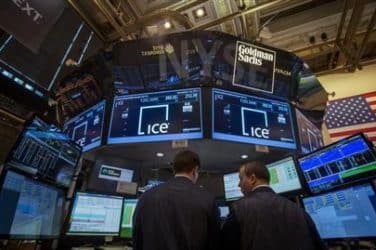
The European Commission is aiming to announce an agreement on equivalence with US trading venues in November, ahead of the MiFID II regulations coming into force in Europe in January.
Tilman Lüder, head of the securities markets unit at the European Commission, spoke at the Association for Financial Markets in Europe’s inaugural European Compliance and Legal Conference in London today.
.@EU_Commission Tilman Luder at #ComplianceLegal2017 : 3rd country issues will take centre stage in final stage of journey to #MiFID II pic.twitter.com/95cnXyIV9T
— AFME (@News_from_AFME) September 20, 2017
Lüder said the trading obligation for derivatives under MiFID II is likely to include benchmark swaps and credit default swap indexes when the new regulations go live on 3 January 2018.
“We want to have a network of equivalent venues in place for the beginning of the trading obligation so participants have the choice of market makers and liquidity,” he added.
Luder @EU_Commission: We are negotiating with CFTC on a mechanism that allows for recognition of EU platforms #MiFID #ComplianceLegal2017
— AFME (@News_from_AFME) September 20, 2017
However he continued that the Commodity Futures Trading Commission, the US regulator, currently authorises EU trading venues on an individual basis.
“We are in discussions with CFTC on the need for the recognition of all MiFID venues and for the EU to authorise all CFTC venues,” Lüder added. “We hope to make an announcement in November.”
The European Commission is also in discussions with regulators in Singapore, Hong Kong, Japan and Australia on equivalence.
Last month the European Securities and Markets Authority published responses to its consultation on the trading obligation for derivatives under MiFID II.
Marcus Schüler, head of regulatory affairs and market structure at Tradeweb Europe, the electronic fixed income, derivatives and exchange-traded fund platform, said in a response that Esma should align the scope of the trading obligation with other major jurisdictions; ensure the scope will be adjusted if and when appropriate; and should aim to establish equivalence with key jurisdictions before the trading obligation becomes effective in January. The US has required certain derivatives to be traded on swap execution facilities and be centrally cleared since 2013.
“Distinct market silos could emerge with trading being conducted primarily between entities within a specific region rather than on a global scale,” added Schüler. “Such fragmentation would harm market participants and end investors in the form of reduced liquidity, less competitive pricing and higher execution risks and costs, reducing their ability to manage financial and economic risks.”
Verena Ross, executive director of Esma, also spoke at the AFME conference.
#ComplianceLegal2017 kicks off with keynote from @ESMAComms Verena Ross on #MiFID/ #MiFIR implementation pic.twitter.com/vVJlLm5WTW
— AFME (@News_from_AFME) September 20, 2017
She said that Esma could play a greater role in equivalence decisions but this would need to be approved by politicians.
Ross @ESMAComms on #MiFID: Important to have rules & essential they are applied consistently across the EU #ComplianceLegal2017
— AFME (@News_from_AFME) September 20, 2017
Ross continued that third party market infrastructures that are critical to the EU, such as clearing houses, benchmark administrators and credit rating agencies, will need EU supervision.






